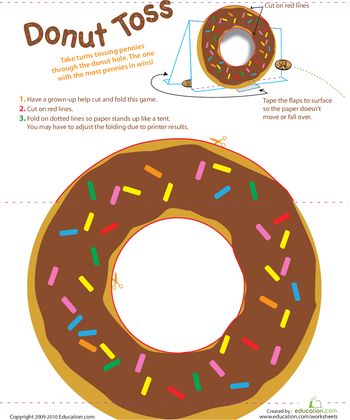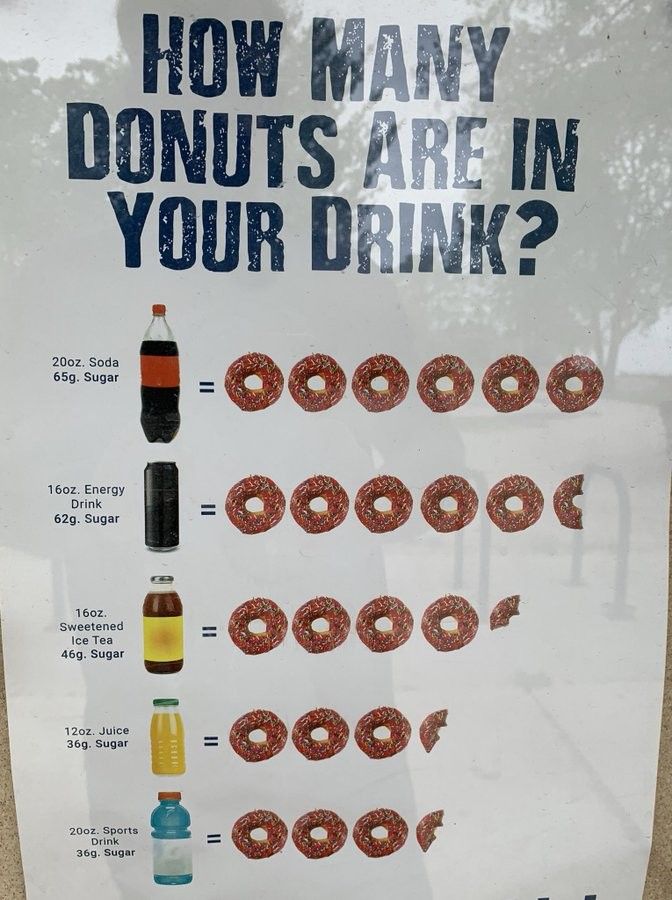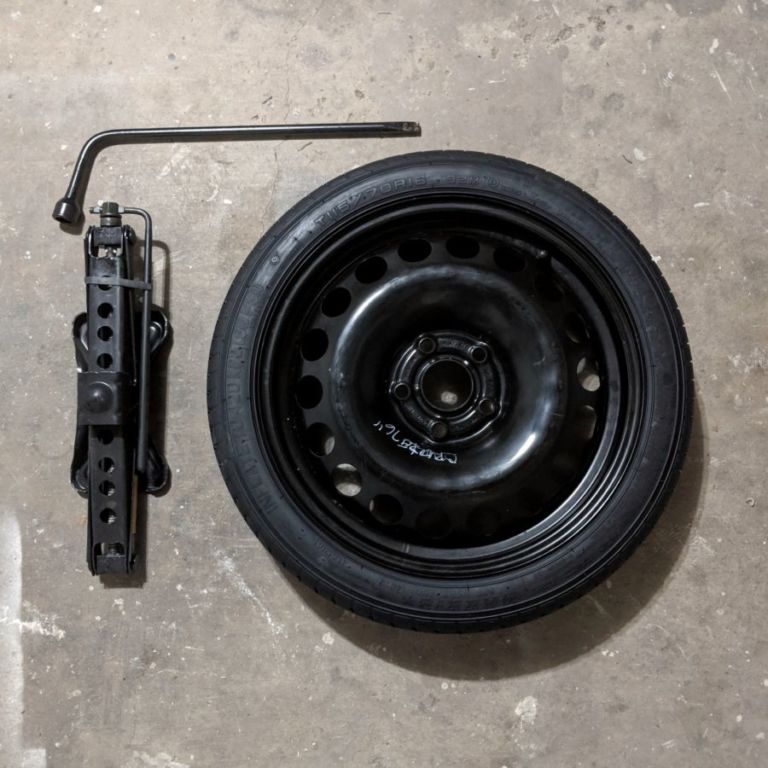Ask a question, get an answer ASAP!
GET A QUOTE
Spare Tire Installation Cost
Service Location
Price range for all vehicles
When one of your tires goes out, it is replaced with a donut tire (also called a spare tire, although a spare tire is typically the same size as a regular tire). The donut tire is intended to provide you with a means of transportation so you can get to the mechanic and have your tire changed as soon as possible. This tire is smaller, so it can be stored inside the vehicle and save space. Most owners’ manuals have a recommended mileage for the donut tire, with 50 to 70 miles being the average. If you are driving on a donut tire, it is best to get it replaced as soon as possible.
Here are a few things to note when driving with a donut tire:
Braking, handling, and cornering affected: Donut tires affect the braking, handling, and cornering characteristics of the vehicle. The donut tire is not as large as the traditional tire, which can decrease braking and handling. Furthermore, the vehicle dips where the donut tire is mounted, so the vehicle will tend to pull where the spare tire is located. Keep this in mind while driving so you can be better prepared for it.
Drive slower: Donut tires are not made to go as fast as conventional tires. This is because they are more compact, so the guideline is the spare tire should not be driven faster than 50 mph. While you can drive on highways with donut tires, it is safer to stay off of them as you will only be able to go about 50 mph or less.
Check your donut tire pressure: The safe air pressure recommended for the donut tire is 60 pounds per square inch (psi). Since the donut tire sits for a while without being inspected, it is a good idea to check the air once you put the tire on your car.
Safety systems disabled: Another thing to keep in mind when driving on a donut tire is that the electronic stability control and traction control systems will not work properly. Once a regular sized tire is placed back on the vehicle, both systems will work and you can drive like you did before. While they are off, keep in mind to take extra time and go a little slower to ensure your safety, and the safety of others.
Once a regular sized tire is placed back on the vehicle, both systems will work and you can drive like you did before. While they are off, keep in mind to take extra time and go a little slower to ensure your safety, and the safety of others.
Driving with a donut tire should only been done when absolutely necessary and for a short amount of time. Check the owner’s manual for the recommendation on how many miles you can drive on the donut tire. In addition, do not go over 50 mph while driving on a spare tire.
The most popular service booked by readers of this article is Spare Tire Installation. YourMechanic’s technicians bring the dealership to you by performing this job at your home or office 7-days a week between 7AM-9PM. We currently cover over 2,000 cities and have 100k+ 5-star reviews... LEARN MORE
SEE PRICING & SCHEDULING
Speedometers
Spare Tire
Compact Spare
The statements expressed above are only for informational purposes and should be independently verified. Please see our terms of service for more details
Please see our terms of service for more details
4.2 Average Rating
Service Hours
7 AM - 9 PM
7 days a week
Phone Number
1 (855) 347-2779
Phone Hours
Mon - Fri / 6 AM - 5 PM PST
Sat - Sun / 7 AM - 4 PM PST
Address
We come to you at no extra charge
Guarantee
12-month/12,000-mile warranty
Our certified mobile mechanics perform over 600 services, including diagnostics, brakes, oil changes, scheduled mileage maintenances, and will come to you with all necessary parts and tools.
Get a fair & transparent quote instantly before booking.
SEE REVIEWS NEAR ME
11 years of experience
585 reviews
Request Nicholas
Nicholas
11 years of experience
Request Nicholas
by Gloria
Toyota Camry V6-3.0L - Spare Tire Installation - Knightdale, North Carolina
Nicholas finished an earlier appointment which enabled him to come by earlier than originally scheduled. I'm very grateful he chose to reschedule. While replacing a flat with my donut spare, he instructed me on how to safely drive to the tire shop for the repair. More importantly to have the shop add air to the donut spare. Nicholas did an excellent job. He as very professional. Thank you
I'm very grateful he chose to reschedule. While replacing a flat with my donut spare, he instructed me on how to safely drive to the tire shop for the repair. More importantly to have the shop add air to the donut spare. Nicholas did an excellent job. He as very professional. Thank you
by Jairus
Ford E-150 Econoline - Spare Tire Installation - Durham, North Carolina
I was VERY pleased with Nicholas' expertise and was more than delighted that he was so prompt. He was very polite and friendly, and he did a marvelous job. If I ever need any repairs to my vehicle in the future, I would definitely ask for Nicholas.
29 years of experience
91 reviews
Request Luis
Luis
29 years of experience
Request Luis
by Saravana
Toyota Prius L4-1.5L Hybrid - Spare Tire Installation - Prospect Heights, Illinois
Luis attended my car today and help in fixing the issue quickly. He is nice and friendly guy. I will recommend him for any services.
11 years of experience
106 reviews
Request Hugh
Hugh
11 years of experience
Request Hugh
by Laura
Toyota FJ Cruiser V6-4.0L - Spare Tire Installation - Castle Rock, Colorado
Hugh came to change out a flat tire for my spare today. I have to say that I feel sheepish for calling someone to come help because I know how to change a tire but I was at work and on shift until 2 am and he came to my place of work. Instead of just installing my spare, he took the time to evaluate the situation. I had a nail in my tire and he took the tire to get patched and my vehicle drove better on my way home than when I left this morning. It was snowing sideways when he showed up to help me. He was a bit of a godsend in the moment and I would recommend him to anyone. I was just distressed because I did not have enough tip to give this guy for overachieving when I needed it. Huge five star review. I only hope to pay his generosity forward. He was more than worth the cost and he did a phenomenal job.
He was more than worth the cost and he did a phenomenal job.
26 years of experience
88 reviews
Request Jonathan
Jonathan
26 years of experience
Request Jonathan
by Adam
Honda Civic L4-1.7L - Spare Tire Installation - Smyrna, Georgia
Jonathan was very punctual, friendly, and transparent. He clearly explained everything he did and provided detail about any additional work he recommended. Great work!
Our certified mobile mechanics make house calls in over 2,000 U.S. cities. Fast, free online quotes for your car repair.
GET A QUOTE
GET A QUOTE
A Guide to Tire Safety
When When sitting behind the wheel of a car, there are two things that most drivers want: to reach their destination, and to do so as safely as possible. This means having a car that is in good condition, and. ..
..
How to Buy All Season Tires
If If you live in areas with changing weather patterns, you may need to change the tires on your car along with the changing seasons. While tedious at best, replacing tires can also get expensive, especially as the tires you...
3 Ways to Increase Your Car Tire Lifespan
Car tires last longer if you drive carefully and keep tires aligned and inflated. Regularly rotate car tires and check for signs of damage.
How do I install the spare tire?
Drive your car long enough and you’ll experience it – having a flat tire. It’s no fun at all, but the spare tire will let you get back on the road (and to get your flat repaired or replaced). Of...
Tire under inflation light keeps coming on when there's no puncture and tire pressures are correct.
If your vehicle is over three to five years old and you have not had the tire pressure sensors replaced in the tires then it may be that one or more sensors are bad in the tires. The sensors have...
The sensors have...
Why would my radio and speedometer stop working on my 2004 Chevrolet Malibu
Hello. If both of these issues started occurring at the same time it is because there is an issue with voltage in the system. Most of the time on this vehicle it is caused by either a low battery, a...
Estimates
Services
Cities
Maintenance
Our service team is available 7 days a week, Monday - Friday from 6 AM to 5 PM PST, Saturday - Sunday 7 AM - 4 PM PST.
1 (855) 347-2779 · [email protected]
Read FAQ
GET A QUOTE
There are two things to consider when determining how long you can drive on a temporary spare tire. Those factors are distance and speed. You Should NOT drive on a donut for more than 50-70 miles. However, you can stretch this range to 90 miles or so if absolutely needed.
How To Put On a Spare Tire
Extra mileage is not a good idea, these tires are temporary for a reason. You should not attempt to drive long distances on these tires. Temporary spare tires come with such little tread to begin with.
You don’t patch a spare tire for the same reason you don’t patch a solo cup. It’s temporary cheap junk.
Tweet
Temporary spare tires are not designed to take on poor road conditions. They won’t be the same as a normal tire. So, any bump, projectile, or road hazard could cause your donut tire to blow out.
You can use a spare tire more than once. Just remember to check the tires wear conditions and PSI before using. If the tire does not pass the safety check, you should not use the spare tire. This means you need to buy a new tire.
Advertisements
Spare Tire and JackWhat PSI Should a Donut BeUnderstanding what PSI your tire should be at is critical to the safety of you, your car, and your passengers. A tire should be replaced, with a donut, when one of your tires blows out or goes flat.
A tire should be replaced, with a donut, when one of your tires blows out or goes flat.
A donut spare tire should have a pressure of 60 pounds per square inch (PSI). HOWEVER, you should always check your vehicle’s manual to find the correct pressure for your spare tire. Before you put your spare tire on your car or truck, there are a few things you need to check.
Digital Tire Pressure Gauge
Designed to maintain correct tire pressure, reduce tire wear and extend tire life; Digital display reading instantly and clearly being shown, no longer do the guesswork of analog gauges!
Buy Now
First and foremost, check your donuts air pressure. If your temporary spare tire is under inflated it is important to pump more air into it before driving off. It is important to keep a portable tire inflator in your vehicle’s trunk or car storage areas at all times in case of emergencies.
Another important safety factor that you need to take into consideration when replacing your tire with your temporary spare, is your other tires sizes. If your tires are not factory or stock, your donut tire may not allow your car to ride properly if installed with your new aftermarket wheels. It is always best practice to get a new spare tire if you upgrade your wheels.
If your tires are not factory or stock, your donut tire may not allow your car to ride properly if installed with your new aftermarket wheels. It is always best practice to get a new spare tire if you upgrade your wheels.
The second factor of safety to take into consideration when replacing a flat tire is the speed your spare tire can handle. How fast you drive on a temporary spare tire depends on your particular spare tire’s ratings. As a general rule of thumb you should never travel over 50 miles per hour (MPH) on your donut tire. It is best to avoid the freeway, to keep your speed down. Traveling at a speed greater than 50 MPH could cause further damage to your car or truck.
Life is fast. Are you living for what matters?
Tweet
When regarding load capacity, speed capability, or all-weather traction, temporary tires are NOT designed the same as a normal tire. It is very important to check your vehicle’s owner’s manual and/or the temporary spare’s sidewall for instructions on proper use. This simple preventative measure could prevent a wreck, severe injury, or even death.
This simple preventative measure could prevent a wreck, severe injury, or even death.
Your vehicles braking, handling, and cornering characteristics are going to decrease when driving on a donut tire. The donut tire will decrease your vehicle’s braking and handling due to that fact that it is smaller in size when compared to your other tires.
Additionally, your vehicle leans to or dips in the direction that the donut tire is. With this in mind, your vehicle will tend to pull where the spare tire is located. It is super important to understand what driving on a donut is going to feel/be like before taking off.
How Much is a Spare TireWhen looking to purchase a spare tire, it is important to know the difference between a spare tire and a donut tire/temporary spare tire.
A spare tire is a tire that is identical to the tires that are currently on your vehicle. This means that, that spare tire has the same load capacity, speed capability, or all-weather traction. These spare tires are typically on trucks, jeeps, or larger vehicles.
These spare tires are typically on trucks, jeeps, or larger vehicles.
Unlike a spare tire, God is not a back up plan.
Tweet
A temporary spare tire, aka a donut tire, is a smaller tire. A temporary spare tire provides you with short or temporary means of transportation. These types of tires are usually on/in cars or smaller vehicles.
Now that you know the difference, it’s important to know where to buy the best and cheapest donut or spare tire(s). The answer is, some donut tires can be bought online for as low as $40. These tires are far more expensive at a tire retailer or mechanic shop. Where a spare tire can range dramatically is when it comes to the size and brand.
Can You Fix a Spare Tire?A temporary spare tire can not be fixed or patched and is meant for limited use. The rubber simply isn’t thick enough to hold a plug reliably.
These tires have no belt and little to no tread. Most importantly, these tires are not reinforced. This means that these tires are already “fragile”. Drive on these tires with caution.
The temporary spare tire is simply made to get you to the repair facility you had your new tires shipped to. Find the right tires to ship to your local dealer!
Symptoms of Spare TiresThere aren’t specifically symptoms of a spare tire, more so, there are signs that you need to put on your spare tire. Signs you need to put on your spare tire:
Hello everyone! In this article I want to talk about how aircraft gas turbine engines (GTE) work. I will try to make it as simple and understandable as possible.
Aircraft gas turbine engines can be divided into:
Moreover, turbofan engines and turbofan engines can contain an afterburner, in which case they will be turbofan and turbofan engines, respectively. In this article, we will not consider them.
In this article, we will not consider them.
Let's start with turbojet engines.
This type of engine was created in the first half of the 20th century and began to be widely used by the end of World War II. The world's first production turbojet aircraft was the German Me.262. Turbofan engines were popular until the 60s, after which they began to be replaced by turbofan engines.
Modern photo of Me-262 taken in 2016
The simplest turbojet engine includes the following elements:
We can say that this is the minimum set for the normal operation of the engine.
And now let's look at what is needed for what and why.
The inlet device is an expanding* channel in which air is supplied to the compressor and pre-compressed. In it, the kinetic energy of the incoming air is partially converted into pressure.
*hereinafter we will talk about subsonic speeds. At supersonic speed, physics changes, and everything is completely different there.
A compressor is a device in which air pressure is increased. The compressor can be characterized by such a value as the degree of pressure increase. In modern engines, it is already starting to cross over 40 units. In addition, the temperature in it increases (maybe somewhere up to 400 degrees Celsius).
Combustion chamber - a device in which heat is supplied to the compressed air (after the compressor) due to the combustion of fuel. The temperature in the combustion chamber is very high, it can reach 2000 degrees Celsius. It may seem to you that the pressure of the gas in the chamber also increases greatly, but this is not so. Theoretically, it is assumed that the heat supply is carried out at a constant pressure. In reality, it drops a little due to losses (the problem of imperfect design).
Turbine is a device that converts part of the gas energy after the combustion chamber into compressor drive energy. Since turbines are used not only in aviation, a more general definition can be given: this is a device that converts the internal energy of the working fluid (in our case, the working fluid is gas) into mechanical work on the shaft. As you could understand, the turbine and compressor are on the same shaft and are rigidly interconnected. If there is an increase in gas pressure in the compressor, then in the turbine, on the contrary, there is a decrease, that is, the gas expands.
Nozzle - a narrowing channel in which the potential energy of the gas is converted into kinetic energy (the remaining gas energy after the turbine). As in a turbine, gas expands in the nozzle. A jet is formed, which, flowing out of the nozzle, moves the aircraft.
We figured out the main elements. But still not very clear how it works? Then let's do it again and briefly.
Air from the atmosphere enters the inlet, where it is slightly compressed and enters the compressor. In the compressor, the air pressure rises even more, and the temperature also rises. After the compressor, the air enters the combustion chamber and, mixing with the fuel there, ignites, which leads to a strong increase in temperature, at a, one might say, constant pressure. After the combustion chamber, the hot compressed gas enters the turbine. Part of the energy of the gas is spent on the rotation of the compressor by the turbine (so that it can perform its function described above), the other part of the energy is spent on the movement of the aircraft that we need, due to the fact that the gas, having passed the turbine, turns into a jet stream in the nozzle and escapes from it (nozzle) into the atmosphere. This completes the cycle. Of course, in reality, all the processes of the cycle run continuously.
In the compressor, the air pressure rises even more, and the temperature also rises. After the compressor, the air enters the combustion chamber and, mixing with the fuel there, ignites, which leads to a strong increase in temperature, at a, one might say, constant pressure. After the combustion chamber, the hot compressed gas enters the turbine. Part of the energy of the gas is spent on the rotation of the compressor by the turbine (so that it can perform its function described above), the other part of the energy is spent on the movement of the aircraft that we need, due to the fact that the gas, having passed the turbine, turns into a jet stream in the nozzle and escapes from it (nozzle) into the atmosphere. This completes the cycle. Of course, in reality, all the processes of the cycle run continuously.
Such a cycle is called the Brayton cycle, or thermodynamic cycle with a continuous working process and heat input at constant pressure. All gas turbine engines operate according to this cycle.
Brayton cycle in P-V coordinates
N-V - compression process in the input device
V-K - the process of compression in the compressor
K-G - isobaric heat supply
G-T - the process of gas expansion in the turbine
G-S - the process of gas expansion in the nozzle
С-Н - isobaric heat removal to the atmosphere
Schematic design of a turbojet engine, where 0-0 is the engine axis
A turbojet engine can also have two shafts. In this case, the compressor consists of a low-pressure compressor (LPC) and a high-pressure compressor (HPC), and the work will be supplied by a low-pressure turbine (LPT) and a high-pressure turbine (HPT), respectively. Such a scheme is more favorable gas-dynamically.
Real engine of this kind in section
We have considered the principle of operation of the simplest scheme of an aircraft gas turbine engine. Naturally, on modern Airbuses and Boeings, turbofan engines are installed, the design of which is noticeably more complicated, but everything works according to the same laws. Let's take a look at them.
Let's take a look at them.
The turbofan engine, first of all, differs from the turbofan engine in that it has two circuits: external and internal. The internal circuit contains the same thing as a turbojet engine: a compressor (divided into LPC and HPP), a combustion chamber, a turbine (divided into HPP and LPT) and a nozzle. The outer contour is a channel, with a nozzle at the end. It has neither a combustion chamber nor a turbine. Before both circuits (immediately after the motor inlet) there is a compressor stage operating on both circuits.
It's not a very clear picture, is it? Let's see how it works.
Schematic design of a two-shaft bypass turbojet engine
The air entering the engine, after passing through the first stage of the low pressure compressor, is divided into two streams. One part of the air goes along the inner contour, where the same processes take place that were described when we dismantled the turbojet engine. The second part of the air enters the outer circuit, having received energy from the first stage of the LPC (the one that works on two circuits). In the external circuit, the air energy is spent only on overcoming hydraulic losses (due to friction). At the end, this air enters the nozzle of the outer circuit, creating a huge thrust. The thrust created by the outer circuit can be 80% of the thrust of the entire engine.
The second part of the air enters the outer circuit, having received energy from the first stage of the LPC (the one that works on two circuits). In the external circuit, the air energy is spent only on overcoming hydraulic losses (due to friction). At the end, this air enters the nozzle of the outer circuit, creating a huge thrust. The thrust created by the outer circuit can be 80% of the thrust of the entire engine.
One of the most important characteristics of a turbofan engine is the degree of bypass. The bypass ratio is the ratio of the air flow in the outer circuit to the air flow in the inner circuit. This number can be either greater or less than one. On modern engines, this number crosses the value of 12 units.
Engines with a bypass ratio of more than two are called turbofan engines, and the first stage of the compressor (the one that works on both circuits) is called a fan.
Boeing 757-200 turbofan. Inlet and fan visible in foreground
On some engines, the fan is driven by a separate turbine, which is placed closest to the internal circuit nozzle. Then the engine turns out to be three-shaft. For example, according to this scheme, Rolls Royce RB211 engines (installed on L1011, B747, B757, B767), D-18T (An-124), D-36 (Yak-42)
Then the engine turns out to be three-shaft. For example, according to this scheme, Rolls Royce RB211 engines (installed on L1011, B747, B757, B767), D-18T (An-124), D-36 (Yak-42)
D-18T in the section from the inside
The main advantage of turbofan engines is the ability to generate high thrust and good economy compared to turbofan engines.
On this I would like to finish about the turbofan engine and move on to the next type of engine - the TVD.
A turboprop engine, like a turbojet, belongs to gas turbine engines. And it works almost like a turbojet. An elementary turboprop engine consists of elements already familiar to us: a compressor, a combustion chamber, a turbine and a nozzle. A gearbox and a screw are added to them.
The principle of operation is the same as that of a turbojet, with the difference that almost all the gas energy is spent on the turbine to rotate the compressor and to rotate the propeller through the gearbox (here the propeller and gearbox are on the same shaft with the compressor). The screw creates the bulk of the thrust. The remaining part of the energy after the turbine is sent to the nozzle, forming jet thrust, but it is small, it can be a tenth of the total. The gearbox in this scheme is needed in order to reduce the speed and transmit torque, since the turbine can rotate at a very high frequency, for example, 10,000 rpm, and the propeller needs only 1500. And the propeller is quite heavy.
Schematic design of a turboprop
But there is another scheme of turboprop engines: with a free turbine.
Its essence is that a separate turbine is placed behind the conventional compressor turbine, which is not mechanically connected to the compressor turbine. Such a turbine is called free. The connection between the compressor turbine and the free turbine is only gas-dynamic. From the free turbine comes a separate shaft, on which a gearbox with a screw is installed. Everything else works the same as in the first case. Most modern engines are performed in this way. One of the advantages of such a scheme is the ability to use the engine on the ground as an auxiliary power unit (APU) without setting the propeller in motion.
One of the advantages of such a scheme is the ability to use the engine on the ground as an auxiliary power unit (APU) without setting the propeller in motion.
Schematic design of a free-turbine HPT
I would like to point out that turboprop engines should not be viewed as an inefficient relic of the past. I have heard such statements several times, but they are not true.
The turboprop engine has the highest efficiency in some cases, usually on aircraft with not very high speeds (for example, at 500 km / h), moreover, the aircraft can be impressive in size. In this case, a turboprop engine can be many times more profitable than the previously discussed turbojet engine.
That's all about turboprops. We slowly approached the concept of a turboshaft engine.
This is probably the first time most readers here have heard such a name. This type of engine is installed on helicopters.
The turboshaft engine is very similar to the free turbine turboprop. It also consists of a compressor, a combustion chamber, a compressor turbine, then there is a free turbine, connected with all the previous ones only gas-dynamically. But such an engine does not create jet thrust, it does not have a jet nozzle, only exhaust. The free turbine has its own shaft, which is connected to the main gearbox of the helicopter (main rotor). Yes, all helicopters I know have such a gearbox, and, as a rule, it is of impressive size. The fact is that the speed of the main rotor of the helicopter is very low. If an aircraft, as I wrote above, they can reach 1500 rpm, then a helicopter, for example, the Mi-8, has only 193 rpm
And the engine speed of a helicopter is often very high (due to its small size), and they have to be lowered by a hundred or more times. It happens that the gearbox is installed both on the engine and on the helicopter itself, for example, on the Mi-2 and its GTD-350 engine.
Schematic design of turboshaft engine
TV3-117 engine from Mi-8 helicopter. The exhaust pipe and drive shaft are visible on the right.
So, we have considered four types of gas turbine engines. I hope my text was clear and useful to you. All questions and comments can be written in the comments.
Thank you for your attention.
Before electricity from the power plant enters our socket, its voltage is first increased to hundreds of thousands of volts, and then lowered back to 220V. Such conversions are made at transformer substations.
The most important characteristic of a substation is the voltage levels on the top and bottom sides. What is written in the title just means that on the upper side there are 220 thousand volts, and on the lower side there are two voltage levels of 110 and 20 kV. That is, in fact, these are two substations on the same territory. And in our outlet, according to the classification of power engineers, 0.4 kV, this is why. that there are 400 volts between the phases (it used to be 380, but the standards have changed a long time ago).
And in our outlet, according to the classification of power engineers, 0.4 kV, this is why. that there are 400 volts between the phases (it used to be 380, but the standards have changed a long time ago).
Substation starts with an open switchgear with a safety briefing, then we go to the upper side of the substation to an open switchgear - outdoor switchgear.
Power lines, disconnectors, SF6 circuit breakers, and portals with busbar sections are visible on the general plan.
Portals are metal structures over the entire visible economy, and a bus section is a part of the substation circuit that can be disconnected from the rest of the circuit by switches and disconnectors. This substation is able to feed from either end of the power line, and can also disconnect the line. I don’t know about this particular power line, but unlike the power cord of your PC, in which the current always comes from the outlet, high voltage power lines are mostly included in a single power system and energy can flow through such lines from different sources (located from different sides of the line) to different consumers at different times. To do this, all generators included in a single network operate strictly synchronously.
To do this, all generators included in a single network operate strictly synchronously.
Switching of the 220 kV line is carried out by SF6 circuit breakers.
SF6 or sulfur hexafluoride is pumped into circuit breakers to better extinguish the arc when the contacts are disconnected. Everyone has noticed a spark in a house switch or in an outlet when the plug is turned off - this is the same principle, but many orders of magnitude more. There are vacuum, oil circuit breakers, but SF6 circuit breakers are considered the most reliable today for this voltage level.
In the photo I showed a pressure gauge, it can be seen from the ground so that a worker can diagnose a gas leak. This model of the circuit breaker cannot be turned off under load when gas has escaped - it will collapse.
Disconnectors are also required at Russian substations:
This is essentially the same switch, but completely open, the disconnector can only be turned off without load. It is needed to create a "Visible Physical Break" - this is a prerequisite for the safe performance of work at the substation facilities. That is, it is not enough to turn off the SF6 circuit breaker and ground it, it is necessary that the physical gap be visible.
It is needed to create a "Visible Physical Break" - this is a prerequisite for the safe performance of work at the substation facilities. That is, it is not enough to turn off the SF6 circuit breaker and ground it, it is necessary that the physical gap be visible.
Switches and disconnectors can be controlled both from the substation control panel and manually using special handles.
One of the interesting devices for an electronics engineer: a high-frequency barrier
In fact, the coil and capacitor make up an LC - a filter that does not allow a high-frequency signal to pass into the network. A high-frequency signal comes from another substation or power plant, its frequency is around 40 kHz, and is used to transmit information, mainly by the protection and automation system. The transmission speed is very low, but the reliability of the method has proven itself for decades and this type of connection is mandatory when building such objects. The signal power is about 1kV and it is very difficult to technically distort or muffle it.
It is impossible to directly measure the currents and voltages in such networks with instruments, therefore, transformers are used for the operation of automation and measurements. We saw the current transformer in the picture with the SF6 switch, and the voltage transformers look like this:
After conversion, we get a maximum of 100 volts or 5 amperes - all panel meters and relay protection and automation devices are set to these values. Unlike the standard industrial controllers: 1-10V and 4-20mA, levels of 100V and 5A are much more resistant to interference.
Another device on the top side is surge protection:
When lightning strikes, the resistance of the varistor drops sharply and dumps excess energy into the ground. And yes, it works at 190kV, because in a 220kV transmission line, each phase relative to the ground has a potential of less than 190kV.
And here is the heart of the substation - autotransformer 250MVA (megavoltampere):
The transformer has many devices to ensure its operation and protection. In case of fire, it is extinguished with water, although oil is not extinguished with water, but if there is no money for foam farming, and you really want it, then you can use water. A spray system is used during which a cloud of steam and water is formed around the transformer, which blocks the access of oxygen and the fire stops.
In case of fire, it is extinguished with water, although oil is not extinguished with water, but if there is no money for foam farming, and you really want it, then you can use water. A spray system is used during which a cloud of steam and water is formed around the transformer, which blocks the access of oxygen and the fire stops.
It is called an autotransformer because it has a connection between the primary and secondary windings, as in LATR - and it is believed that its efficiency is higher than that of a classic transformer.
This transformer has two secondary windings 110 and 10. The 10 kV winding is used only for auxiliary needs. As practice has shown, if a 10Kv winding is loaded at its nominal value, then unforeseen electromagnetic fields are formed and the bolts with which the bottom of the transformer is screwed begin to glow.
The load in the network is not constant and this transformer also provides voltage regulation under the load.
On the entire high side (the high side, by the way, it is called by the level of voltage, physically everything is in the same plane), the crackling of discharges is constantly heard and it tires rather quickly.
After the autotransformer, the low side begins with a voltage level of 110
Everything is the same here: open switchgear, switches, portals, busbar sections…
Voltage transformers:
Disconnectors and switches:
And electricity is sent to other substations
starts after the transformer 110/20
The transformer is smaller, the cooling system is passive, this is already a classic transformer, not an autotransformer. But all systems for draining oil and air, protection are also present. There is silence on side 110, there is no crackle of discharges at all.
The lowest side of the substation is 20kV. represented by indoor switchgear - closed switchgear
If it is forbidden to approach live parts at 220 kV outdoor switchgear closer than 4 meters, then in 20 kV indoor switchgear you can safely touch the equipment
Everything is closed, marked, controlled from the remote control or manually, it is impossible to open a cell just like that - everything is blocked by automation.
For repair, the cells are rolled out on the following trolleys:
Domestic controllers are used for monitoring and control:
Further, 20 kV voltage is supplied to local substations via underground cables. Networks with voltages above 0.4 kV are isolated from the ground (well, not quite 100%, but there is no usual zero in such networks). During a ground fault, the current still flows, but is perceived as normal consumption, and the arc damages the cable insulation and ultimately leads to its damage and phase-to-phase short circuit. To prevent this, they came up with a special system:
A transformer with a midpoint is placed on the three phases of the cable, and with an equal load on the phases, the voltage at the midpoint relative to the ground is zero, and when a ground fault occurs, the voltage increases and is an indicator of the problem. To identify a specific cable. in which a short circuit occurs, large resistors are used.
There are also arc quenching coils that allow you to compensate for the potential difference, extinguish the arc, and according to stories, sometimes the insulation is tightened and the cable does not need to be repaired.
The main control panel of the substation:
the substation diagram is drawn on the cabinets and the controls are inscribed in the diagram - before entering, they were strictly reminded not to twist any handles and not to press anything. Behind the console there are a bunch of cabinets with AC and DC power systems (all protection works on a completely independent DC network), alarm systems, fire extinguishing systems, etc. All are closed.
This is how a high-frequency communication device looks like, the very one that is connected to a high-frequency barrier and communicates with its own kind at other substations.
In conclusion, we were allowed into the telemetry and relay protection room: I was expecting something interesting, but the room was filled with closed cabinets with incomprehensible abbreviations. There was no time left and it was not possible to ask for details.
This is how one of the cabinets looks like, where something is visible: Part of the RPA is assembled on mechanical relays, part on logical controllers.